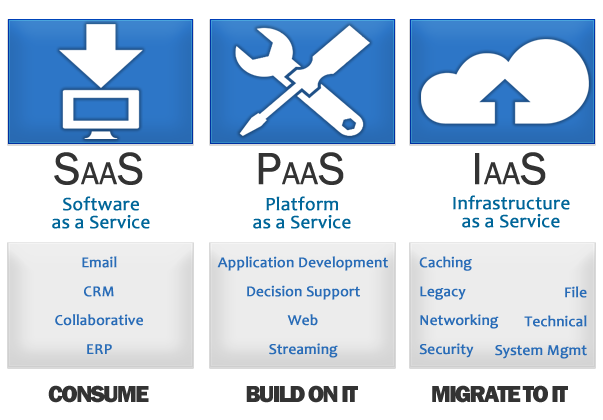Types and Benefits of Cloud Computing
Cloud computing is the on-request delivery of database storage, compute power, applications and other IT resources on the internet, with pay-by-way price through the Cloud Services platform.
Cloud Computing Basics :
Regardless of whether you supporting the basic activities of your business or you are running applications that offer photographs to a large number of versatile clients, a Cloud Services Platform gives quick access to flexible and low cost IT resources. With cloud computing, you don't have to make large irreversible investments in hardware and invest a considerable measure of energy and time to take up the management of that equipment. Instead, you can make the right type and size of the computing resources necessary to power your latest bright idea or to operate your IT department. You can reach as much resources as you need, pay almost immediately, and pay only for the amount you use . For PPT Click here Cloud Computing Training in Chandigarh .
How Does Cloud Computing Work?
Cloud computing provides an easy way to access a wide set of servers, storage, databases, and application services on the Internet for example, Amazon Web Services owns and maintains hardware related to the network required for these application services, while you provision and utilize what you require by means of a web application .
Advantages of Cloud Computing
Trade capital expense for variable expense
Rather than investing vigorously in data centers and servers before, know how you will utilize them, you can pay only when you consume computing resources, and only pay how much you consume.
Benefit from massive economies of scale
Using Cloud Computing, you can get less variable cost as much as you can get yourself. Since use from a huge number of clients are totaled in the cloud, suppliers, for example, Amazon Web Services can accomplish higher economies of scale which converts into lower pay when you go to prices.
Stop guessing capacity
Finish guessing on your infrastructure capacity requirements. When you make a competent decision before deploying an application, you often end up sitting on expensive inactive resources or dealing with limited capabilities. With cloud computing, these problems go away. You can reach as much or as little as you want, and with a few minutes notice you can scale up and down as needed.
Increase speed and agility
In the cloud computing environment, new IT resources are only one click away, which implies you lessen the time it takes to make those assets accessible to your designers from weeks to minutes.As a result, agility for the organization has increased dramatically, because cost and time are very short for experimentation and development.
Go global in no time
Easily deploy your application in many areas around the world with just a few clicks. This means that you can provide low latency and a better experience for your customers at minimal cost.
Types of Cloud Computing
There are three main types of cloud computing that are commonly known as Infrastructure as a Service (IaaS), Platform as a Service (PaaS), and Software as a Service (SaaS). Choosing the right type of cloud computing for your needs can help you to strike the right balance of control and undivided heavy lifting.
Infrastructure as a Service (IaaS):
Infrastructure as a Service, which is sometimes abbreviated as IAAS, has the original building blocks for cloud IT, and usually up to networking facilities, PCs and information storage room. IaaS provides you with the largest amount of adaptability and management control over your IT resources and is most like existing IT resources that numerous IT departments and developers know about today.
Platform as a Service (PaaS):
Platforms as a service expel the requirement for organizations to manage the underlying infrastructure and allow you to focus on the management of your applications. This causes you be more effective as you don't have to stress over asset acquirement, scope quantification, programming support, fixing, or any of the other undifferentiated truly difficult work associated with running your application
Software as a Service (SaaS):
To learn more about this visit our website Cloud Computing Training in Chandigarh .











simply superb,mind blowing, i will share your blog to my friends also
ReplyDeleteAWS Online Course